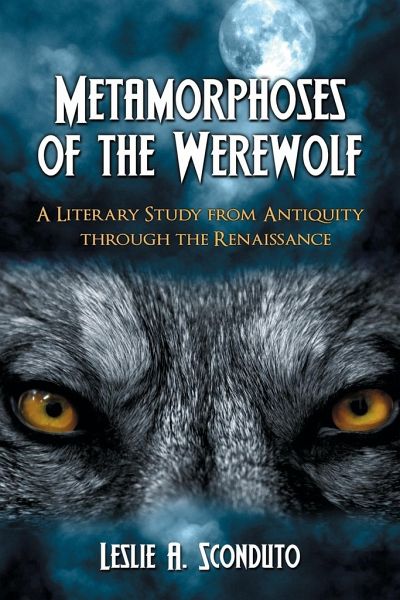
Metamorphoses of the Werewolf
A Literary Study from Antiquity through the Renaissance
Versandkostenfrei!
Versandfertig in 1-2 Wochen
34,99 €
inkl. MwSt.

PAYBACK Punkte
17 °P sammeln!
The mythical werewolf is known for its sudden transformation under the full moon, but the creature also underwent a narrative evolution through the centuries, from bloodthirsty creature to hero. Beginning with The Epic of Gilgamesh, Ovid's Metamorphoses, and an account in Petronius' Satyricon, the book analyzes the context that created the traditional image of the werewolf as a savage beast. The Catholic Church's response to the popular belief in werewolves and medieval literature's sympathetic depiction of the werewolf as victim are presented to support the idea of the werewolf as a complex a...
The mythical werewolf is known for its sudden transformation under the full moon, but the creature also underwent a narrative evolution through the centuries, from bloodthirsty creature to hero. Beginning with The Epic of Gilgamesh, Ovid's Metamorphoses, and an account in Petronius' Satyricon, the book analyzes the context that created the traditional image of the werewolf as a savage beast. The Catholic Church's response to the popular belief in werewolves and medieval literature's sympathetic depiction of the werewolf as victim are presented to support the idea of the werewolf as a complex and varied cultural symbol. Instructors considering this book for use in a course may request an examination copy here.














